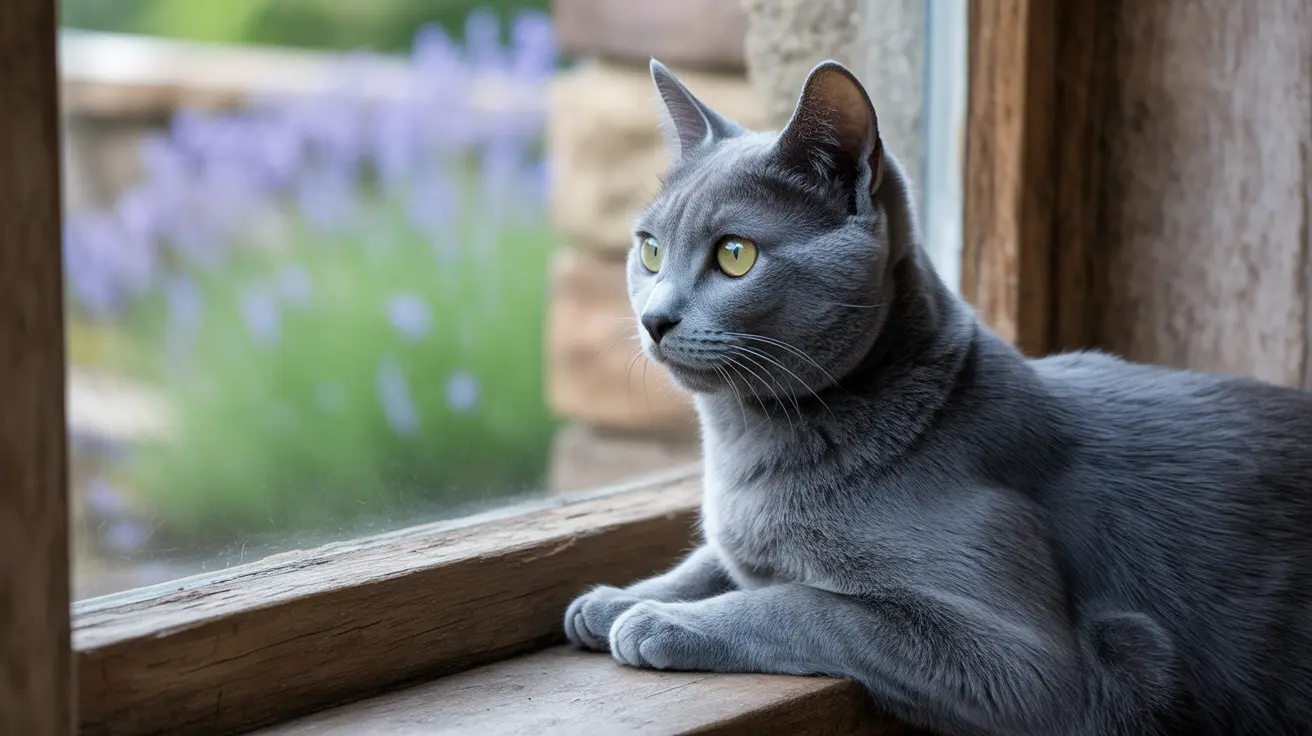The Russian Blue cat, with its distinctive silver-blue coat and emerald green eyes, has captivated cat lovers for centuries. Understanding the Russian Blue origin helps us appreciate how this naturally occurring breed developed into the beloved companion we know today.
From its humble beginnings in Russia's northern ports to its current status as a prestigious pedigree cat, the Russian Blue's journey is as fascinating as the breed itself. Let's explore the rich history and development of this remarkable feline.
The Origins of the Russian Blue
The Russian Blue's story begins in the port city of Arkhangelsk, located on Russia's northern coast. These cats, originally known as Archangel Cats, were believed to have lived wild in the area's dense forests before being discovered by sailors in the 1800s.
While some legends suggest these cats were favored pets of Russian czars, historical evidence points to a more humble beginning as ship's cats on merchant vessels. Their thick, warm coats made them perfectly suited to the harsh northern climate, while their hunting abilities made them valuable crew members on long sea voyages.
Journey to Recognition
The first documented appearance of Russian Blues in Western Europe occurred in 1862 when sailors brought them to Great Britain. Their official debut came a decade later at London's Crystal Palace in 1872, where they competed as "Archangel Cats" alongside other blue-coated breeds.
Initially grouped with other blue cats in shows, the Russian Blue finally received its own breed classification in 1912, marking a significant milestone in its history. This recognition helped establish the breed's unique characteristics and ensure its preservation as a distinct cat breed.
Physical Characteristics and Modern Standards
Today's Russian Blue is recognized by its signature features: a medium-sized, elegant body with long, graceful lines and a distinctive double coat in silvery blue. The coat's unique texture comes from each hair being tipped in silver, creating a shimmering effect when the cat moves.
Their most striking feature is perhaps their brilliant green eyes, which develop their vivid color as the cat matures. Combined with their plush coat and sweet facial expression - often described as a gentle smile - these features make the Russian Blue instantly recognizable.
Post-War Revival and Development
World War II nearly devastated the Russian Blue population in Europe. Dedicated breeders, particularly in Scandinavia and Britain, worked diligently to preserve the breed through careful crossbreeding with Siamese and British Blue cats. This preservation effort not only saved the breed but also helped establish different regional variations in type.
Modern breeding programs have focused on returning to the original Russian Blue characteristics while maintaining the breed's robust health and gentle temperament. Today's Russian Blues closely resemble their ancestors while benefiting from careful breeding practices that have enhanced their natural qualities.
Frequently Asked Questions
Where did the Russian Blue cat originally come from and why are they also called Archangel Cats?
Russian Blue cats originated in the Arkhangelsk (Archangel) region of northern Russia. They're called Archangel Cats because Arkhangelsk was their point of origin and the port from which they first traveled to other parts of the world.
How did Russian Blue cats first reach Europe and when were they officially recognized as a breed?
Russian Blues reached Europe in the 1860s via sailing ships from Arkhangelsk. They were first shown at London's Crystal Palace in 1872 and received their own breed classification in 1912.
What are the unique physical traits that distinguish Russian Blue cats from other blue-coated breeds?
Russian Blues are distinguished by their silvery-blue double coat, bright green eyes, and wedge-shaped head with a distinctive "smile." Their coat has a unique silver sheen due to silver-tipped guard hairs.
What kind of personality and temperament is typical of a Russian Blue cat?
Russian Blues are known for being intelligent, gentle, and reserved. They form strong bonds with their families while remaining shy around strangers. They're quiet, adaptable cats that combine playfulness with a calm demeanor.
How has the Russian Blue breed been preserved and developed since World War II?
After World War II, breeders in Scandinavia and Britain saved the breed through careful crossbreeding with Siamese and British Blues. Modern breeding programs have worked to restore original Russian Blue characteristics while maintaining genetic diversity.
Conclusion
The Russian Blue's journey from the northern ports of Russia to becoming a globally recognized and beloved breed is a testament to their enduring appeal. Their combination of beauty, intelligence, and gentle temperament continues to win hearts worldwide, ensuring their place in the future of feline companionship.






